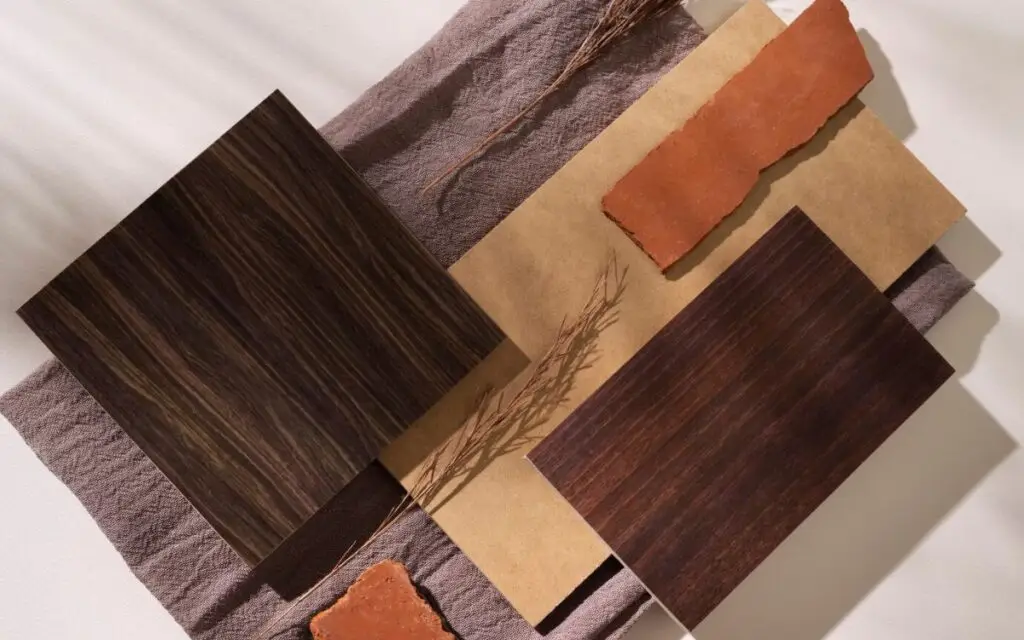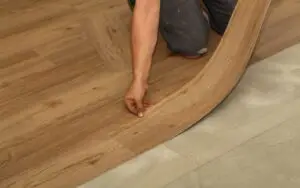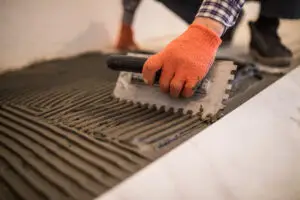Key Tools Needed for Carpet Installation
Essential Tools for Professional Carpet Installation
Professional carpet installers rely on a range of specialized tools to ensure precise and efficient results. These tools are designed to make each stage of the installation process smoother and faster, helping avoid costly mistakes. Whether you’re planning to hire a professional or attempt a DIY project, knowing these tools is essential to achieving a flawless finish.
Must-Have Tools for DIY Carpet Installation
For DIY enthusiasts, there are several basic tools that are crucial for successfully installing carpet. Some of these tools can be rented or purchased, but it’s important to remember that using the correct equipment is vital for avoiding problems like wrinkles, uneven seams, or damage to the carpet.
Tack Strips: The Foundation of Carpet Installation
Importance of Using Tack Strips
Tack strips are essential for securing the edges of the carpet around the perimeter of a room. These small, narrow strips are embedded with sharp nails that hold the carpet in place and prevent it from slipping or moving. They form the base of any good carpet installation.
How Professionals Install Tack Strips for Stability
Professional installers use tack strips to create a tight and secure fit. They ensure that the strips are placed at the correct distance from the wall—usually around half an inch—so that the carpet can be tucked neatly for a smooth edge. Tack strips are particularly important in areas with high foot traffic.
The Knee Kicker: Ensuring a Tight Fit
Why You Need a Knee Kicker for Proper Carpet Stretching
A knee kicker is a hand-operated tool used to stretch the carpet over the tack strips. It ensures the carpet is pulled tightly across the floor, eliminating any wrinkles or loose sections. Without this tool, it’s nearly impossible to get the carpet to fit snugly around the room.
How to Use a Knee Kicker Efficiently
To use a knee kicker, place the padded end against the carpet and use your knee to drive the carpet onto the tack strips. Professional installers know how to adjust the pressure to avoid damaging the carpet while still achieving a tight fit. This is a critical step that, when done incorrectly, can lead to premature wear and buckling of the carpet.
Power Stretcher: A Vital Tool for Large Rooms
Benefits of Using a Power Stretcher
For larger rooms, a power stretcher is indispensable. It allows for the carpet to be stretched uniformly across the floor, preventing wrinkles and ensuring a smooth, even surface. The power stretcher can cover more ground and apply more consistent pressure than a knee kicker, making it essential for professional-grade installations.
How a Power Stretcher Prevents Carpet Wrinkles
Without a power stretcher, carpet in large spaces may develop wrinkles or bubbles over time. This tool ensures that the carpet is stretched tightly across the entire area, securing it firmly to the tack strips and avoiding any future shifting or bunching.
Carpet Seam Roller: Achieving a Smooth Finish
How the Carpet Seam Roller Creates Invisible Seams
A carpet seam roller is used to press down the seams where two pieces of carpet meet. This tool ensures that the carpet fibers mesh together, creating a smooth and almost invisible seam. It’s crucial for larger installations where more than one piece of carpet is needed.
Best Practices for Seam Rolling During Installation
Professionals use the seam roller to carefully blend seams after adhesive is applied. Rolling the seams immediately helps create a continuous look, preventing visible lines or gaps that could detract from the carpet’s appearance.
Carpet Cutting Tools: Precision and Safety
Types of Carpet Cutting Tools Professionals Use
Carpet installation requires precision cutting tools like utility knives, carpet cutters, and hook knives to trim the carpet to the correct size. These tools allow for clean, straight cuts that fit perfectly along walls, corners, and around obstacles like vents and doorways.
How to Safely Use Carpet Cutting Tools for Clean Edges
Using a sharp knife and cutting slowly are key to avoiding frayed or uneven edges. Professionals always ensure they are cutting from the back of the carpet, which helps avoid damage to the fibers and ensures a straight edge for a clean finish.
Carpet Tape: Securing the Edges
Different Types of Carpet Tape for Various Applications
Carpet tape comes in several varieties, including double-sided tape for securing the carpet to the floor and seam tape for joining two sections of carpet. Each type serves a specific purpose and ensures a secure installation, especially in areas where the carpet might be prone to lifting.
How to Apply Carpet Tape for Durable Installation
Applying carpet tape involves careful placement and pressure to ensure it bonds properly. Professionals apply tape along seams and edges, then press the carpet down firmly to ensure a lasting hold. This is especially useful in areas where tack strips cannot be used, such as over concrete floors.
Glue vs. Tack Strips: When to Use Each Method
The Pros and Cons of Glue-Down Carpet Installation
Glue-down carpet installation is an alternative to tack strips, especially for commercial settings or areas where tack strips are impractical. While glue-down installation provides a strong bond, it can be more difficult to remove and replace the carpet later. It’s also more time-consuming and requires precise application.
Tack Strips vs. Glue: Choosing the Best Option for Your Carpet Type
For residential installations, tack strips are the preferred method due to their ease of use and flexibility. However, for heavier traffic areas or when installing over concrete, glue may be the better choice. Professionals can help determine which method is best for your specific needs.
Why Professional Installers Use Specialized Tools
The Advantage of Professional Tools in Carpet Installation
Professionals have access to high-quality, specialized tools that are designed for efficiency and accuracy. These tools not only speed up the installation process but also ensure a superior result. For example, professional-grade power stretchers and seam rollers provide a level of precision that DIY tools often cannot match.
How the Right Tools Ensure Durability and Longevity
Using the correct tools during carpet installation can greatly extend the lifespan of the carpet. When installed properly, the carpet is less likely to develop issues like wrinkles, seams coming apart, or premature wear. Professional installers know how to select and use these tools to ensure a long-lasting installation.
The Risks of Using the Wrong Tools in DIY Carpet Installation
Common DIY Mistakes and Tool Misuse
One of the most common mistakes in DIY carpet installation is using the wrong tools or not using them correctly. Without the proper equipment, you risk leaving wrinkles, uneven seams, or loose edges, which can lead to costly repairs or replacements later on.
How Using Improper Tools Can Damage Your Carpet
Improper tools can damage the carpet fibers or backing, resulting in a poor fit and even ruining the material. For instance, using a dull knife can cause frayed edges, while incorrectly stretching the carpet can result in unsightly bubbles and creases.
Preparing Your Floor for Carpet Installation
Why Proper Floor Preparation is Crucial
Before installing carpet, the floor must be clean, dry, and free of any debris or old adhesive. Failure to prepare the floor properly can result in an uneven surface, causing the carpet to wear out faster or not adhere correctly.
Tools You Need for Pre-Installation Floor Cleaning
Basic cleaning tools such as vacuums, scrapers, and adhesive removers are essential for prepping the floor. A smooth, clean surface ensures the carpet will lay flat and adhere properly, preventing future issues like wrinkles or premature wear.
How to Choose the Right Tools for Your Carpet Type
Matching Tools to the Carpet Material
Different carpet types require different tools for proper installation. For example, plush carpets may require more precise cutting tools to avoid fraying, while looped carpets might need special seam rollers to avoid damaging the loops.
Ensuring Your Tools Are Compatible with Different Carpet Styles
Professionals choose tools that match the specific style of carpet being installed. Using the wrong tool for your carpet type can lead to damage or an improper fit, which is why it’s essential to either invest in the right tools or hire an expert.
Carpet Installation Tools for Tight Spaces
Tools Designed for Corners and Small Areas
In tight spaces such as hallways or closets, specialized tools like corner stretchers or mini knee kickers are used. These tools allow installers to maneuver in confined areas without compromising the quality of the installation.
How Professionals Handle Tight Spaces with Specialized Equipment
Professionals use smaller, more agile tools to navigate tight spaces while still ensuring a perfect fit. These tools help avoid issues like loose edges or bulges, which can be common when working in small or irregularly shaped areas.
Comparing Professional-Grade Tools to Rental Tools
Differences in Quality Between Professional and Rental Tools
Rental tools are often less durable and not as precise as the tools professionals use. While they may be sufficient for small DIY projects, professional-grade tools are designed for heavy-duty use and can make a significant difference in the quality of the installation.
Why Renting Tools May Not Be the Best Option for Large Projects
For large projects, renting tools can end up being more expensive and less efficient than hiring a professional. Rental tools may not have the same accuracy or power, leading to more time spent on the installation and potentially lower-quality results.
Hiring a Professional for Carpet Installation: Is It Worth It?
How Professional Installers Save Time and Reduce Errors
Professionals bring experience, skill, and the right tools to the job, allowing them to complete the installation more quickly and accurately than most DIY efforts. This saves both time and potential costs of fixing mistakes made during a DIY project.
Why Professionals Have Access to Better Tools
Professional installers use advanced tools that are not always available for rent or purchase by homeowners. These tools allow them to achieve better results and ensure that the carpet is installed to last for years without issues.
Compare DIY vs. Professional Carpet Installation
The Downsides of DIY Installation: Hidden Costs and Time Investment
DIY carpet installation may seem like a cost-effective solution, but without the right tools and experience, it can lead to errors that require costly repairs. Additionally, DIY projects often take much longer to complete, and the results may not be as durable or professional-looking.
Benefits of Hiring a Professional Installer: Precision and Quality
Professional carpet installers bring expertise, high-quality tools, and efficient techniques to the table. Their work is faster, more precise, and often comes with a warranty, ensuring peace of mind for homeowners.
Case Studies of DIY Installation Gone Wrong
Many DIY carpet installation attempts have resulted in issues like wrinkles, improper stretching, and uneven seams, all of which require professional intervention to correct. In most cases, the cost of fixing these mistakes far exceeds the initial price of hiring a professional in the first place.





